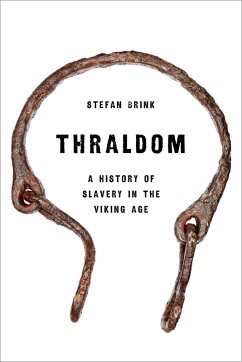Nordic slavery is an elusive phenomenon, with few similarities to the systematic exploitation of slaves in households, mines, and amphitheaters in the ancient Mediterranean or the widespread slavery at American plantations during the eighteenth and nineteenth centuries. Scandinavians in the early Middle Ages lived in a society foreign to us, characterized by different and shifting social statuses. A person could be at once socially respected and unfree. It was possible to hand oneself over as a slave to someone else in exchange for protection and food. One could be sentenced temporarily to enslavement for some offense but later purchase his manumission. Young men could enter into a kind of "contract" with a king or chieftain to join his retinue, accepting his authority, patronage, and jurisdiction, while at the same time making a quick social elevation. Slavery was widespread all over Europe during the early Middle Ages and Scandinavians, as Stefan Brink illustrates in this book, became a major player in the northern slave trade. However, the Vikings were not particularly interested in taking slaves to Scandinavia; instead, their "business model" seems to have been to raid, abduct, and then sell captured people at major slave markets. Their goal was not people but silver. Using a wide variety of source materials, including archaeology, runes, Icelandic sagas, early law, place names, personal names, and not least etymological and semantic analyses of the terminology of slaves, Thraldom provides the most thorough survey of slavery in the Viking Age.
Dieser Download kann aus rechtlichen Gründen nur mit Rechnungsadresse in A, B, BG, CY, CZ, D, DK, EW, E, FIN, F, GR, HR, H, IRL, I, LT, L, LR, M, NL, PL, P, R, S, SLO, SK ausgeliefert werden.


